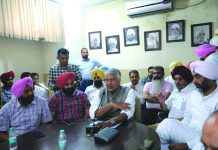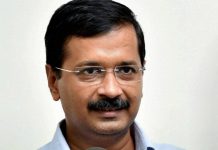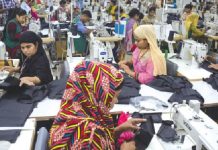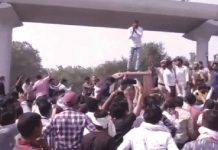
The opening of a multiplex in Srinagar marks the return of cinemas to the valley after over three decades, and also the return of a degree of normalcy. However, many dismiss these developments as a callous effort to negate the tragedy of the past three decades, writes Riyaz Wani
Last week, a multiplex was opened in Srinagar, bringing cinemas back to Kashmir Valley after over three decades. Located in Srinagar’s high security Sonawar area, the theatre’s inaugural film was Aamir Khan’s Laal Singh Chaddha, a big-budget remake of the 1994 American classic “Forrest Gump” which was, in part, shot in Ladakh and Srinagar.
In 1989, as militancy gripped the Kashmir Valley, theatre owners downed their shutters. Though there was an attempt to reopen a cinema hall along the posh Residency Road in 1999, a grenade attack on the moviegoers killed one and injured several others, forcing the authorities to close down the theatre again.
Ever since, no other cinema hall has dared to screen any movie. Some of them like Palladium in Lal Chowk have been burnt and the others like Shah Cinema near Qamarwari have been used to accommodate the security personnel.
So, opening of the multiplex is a big development as it testifies to the return of a degree of normalcy to the union territory.
“A major socio-economic revolution has been sweeping through Jammu and Kashmir during the last three years,” said Manoj Sinha, the region’s lieutenant governor during the inauguration of the multiplex. “It is a reflection of a new dawn of hope, dreams, confidence and aspirations of people.”
Despite the turmoil, many movies have been shot in Kashmir over the last three decades. This has included the films of Bollywood megastars such as Shah Rukh Khan, Salman Khan and Aamir Khan, with the last one shooting sequences of Lal Singh Chaddha last year.
About 20 movies have been shot in the Valley during the troubled period, a number of them reflecting Kashmir either as an abode of unyielding terror, or an unremitting battleground between India and Pakistan. Shah Rukh Khan, who shot Jab Tak Hai Jaan a decade ago, used Kashmir’s breathtaking geography as a backdrop for a love story rather than as a subject for a story about terrorism. Two years before before Jab Tak Hai Jaan, Ranbir Kapoor starrer Rockstar was also shot in the Valley. It restored the Valley to its original image as a romantic abode after the intervening dose of conflict cinema.
Bollywood’s return to the Valley – and now followed by a multiplex – however, portrays more than peace. The film industry is instrumental in shaping and reinforcing Kashmir’s pastoral image around the globe. It was Raj Kapoor who brought to the world the Valley’s fabled scenic beauty when he shot Barsaat here in 1949. As Nimmi sang ‘Hawa main udta jaye mera lal dupatta malmal ka’, Kashmir’s lush meadows formed the backdrop. Similarly, long before the dotcom revolution made it familiar to millions around the world, the snowscapes of Kashmir resonated to Shammi Kapoor’s ‘yahoo’ call in Junglee.
But unlike in the past, Bollywood and Kashmir relationship is no longer spontaneous and natural. Like everything else in the Valley, it has also become political. Movie-making in Kashmir is about peace, about reinforcing Kashmir’s image as a paradise on earth but in the current context this inference of Bollywood re-entry will struggle to sound innocent. It will, in fact, appear politically motivated. True, Bollywood shoots and the reopening of cinema are the biggest advertisement so far for peace in Kashmir. It will certainly help bring more tourists to the region. Both of these are desirable ends. But actually, this is not how these things are understood in Kashmir. Many people tend to look at these developments as a callous effort to negate the tragedy of the past three decades.
There is a reason for this. Tension in Kashmir is between a simmering, dormant political conflict and elaborately contrived imagery of peace. Imagery is often deliberately played up as normalcy or sometimes even genuinely mistaken for peace. And this imagery is about the arrival of tourists, a peaceful Amarnath yatra, Bollywood shoots and of course, the unnaturally high turnout in polls, sometimes well-attended public meetings of the mainstream politicians, and now the re-opening of cinemas. All these events together make Kashmir appear as an eminently normal place but cumulatively they forge no genuine peace, a fact not acknowledged by the promoters of this normalcy.













